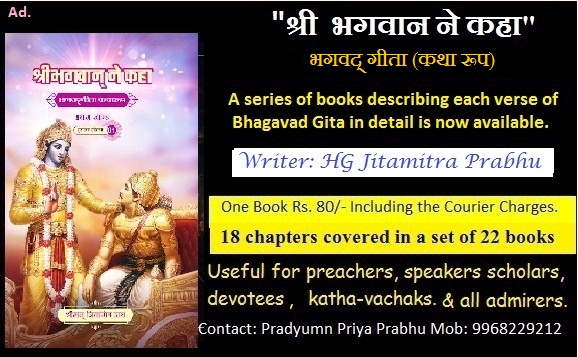Ramkeli, Centre of Krishna Bhakti in Malda, Bengal
Gauda or Gour, located in the Malda district, presently is a ruined city that served as the capital of Bengal between the 12th and 16th centuries.
In the heart of Malda, lies the small village of Ramkeli, popular as
the land of Rup and Sanatan, the two great disciples of Sri Chaitanya Mahaprabhu.
In the summer of 1515 AD, Sri Chaitanya Mahaprabhu was travelling to Vrindavan and for a short while he had stayed at Ramkeli. Two brothers, Rup and Sanatan Goswami who lived a life of opulence and luxury, were so inspired by His spiritual lessons that they decided to renounce luxury and devote their life to spread the message of Krishna.
|
"Lord Caitanya
Mahaprabhu eventually arrived at a village named Ramakeli. This village is
situated on the border of Bengal and is very exquisite. While performing
sankirtan in Ramakeli-gram, the Lord danced and sometimes lost consciousness
due to love of God. While at Ramakeli-gram, an unlimited number of people
came to see His lotus feet." (Sri
Chaitanya-charitamrita, Madhya, 1.167) |
At the temple entrance, there is a pair of 600-year-old Kadamba and Tamal trees under which Prabhu meditated for hours during his stay.
Later the brothers dug eight large kundas (religious ponds or tanks) in and around Ramkeli to help the villagers from severe water scarcity. All the waterbodies are now titled after the Goswamis, namely – Rup Sagar, Shyam Kunda, Radha Kunda, Lalita Kunda, Bishakha Kunda, Surabhi Kunda, Ranjha Kunda and Indulekha Kunda.
Fair- Ramkeli MelaThe Goswami brothers
had also organized a big fair to celebrate Prabhu’s visit at Ramkeli. Chaitanyadev
and Sree Nityananda, were the guiding lights of goswamis. They brought
forward an outstanding social reform - introducing mass-marriage among
deserted men and women of low-born classes in the social history of Bengal. Along
with those exploited and oppressed people, there were huge number of
widows—masterless, husband-deserted, abandoned women in the society. Every
year a religious ceremony including pious yagjna (oblation of fire) was held
at the lawn in front of the temple on the auspicious day of Sankranti of the
month of Jesthha (1st week of June). Thousands of people through this system
returned back to the society with dignity. In his Statistical Account of Bengal, Malda, W W Hunter (1876)
also reported about the gathering that continued for five days where the
vaishnavs opted to get married in strict accordance with the rites prescribed
by Chaitanya, and their number was estimated to be around 30,000 heads. Ramkeli mela is held
every year at the same place of old Gaur, but the event of mass-marriage has
been stopped for more than one hundred years. Presently thousands of
Chaitnaya Mahaprabhu’s followers gather from around the world. Free
accommodation is arranged in the temple quarters. Six days of naam-kirtan is
organized on a grand scale. The small village turns to a melodic land during
that one week of the fair. |
HistoryThe ancient city of
Gaur in Malda has also been mentioned in Hindu Puranic texts and its history
is recorded since 500 B C. During those days Gaur and Pundrabardhana (Pandua)
was under the Mauryan Empire. Archeological findings have also indicated that
the whole of North Bengal was part of the Gupta Empire in those ancient times.
Thereafter, the Guptas were succeeded by the king of Karnasubarna in 700 A.D,
who ruled for almost thirty years. From mid 8th century to 11th century AD
the Pala dynasty ruled Bengal and promoted Buddhism in the region actively.
After the rule of the Palas it was the turn of the Sen Dynasty. Their
religion was Hinduism (Vedic Hinduism, Shaivism, Tantra, and Vaishnavism).
Balal Sen was the third ruler of the Sen Dynasty who ruled over Gaur and
established sole control over entire Bengal within 1168 A.D. The Sen Dynasty
wielded their rule over Bengal till 1204 AD, after which, the Mughals and
Afghans ended their rule by invading Bengal. |
















